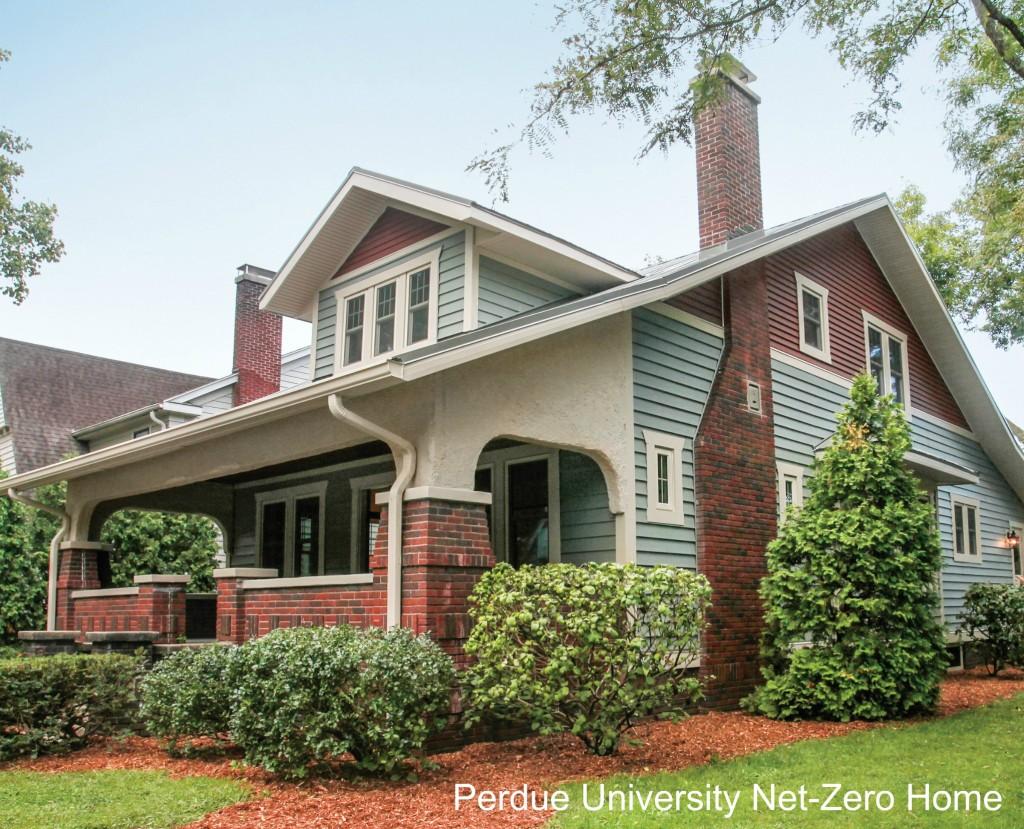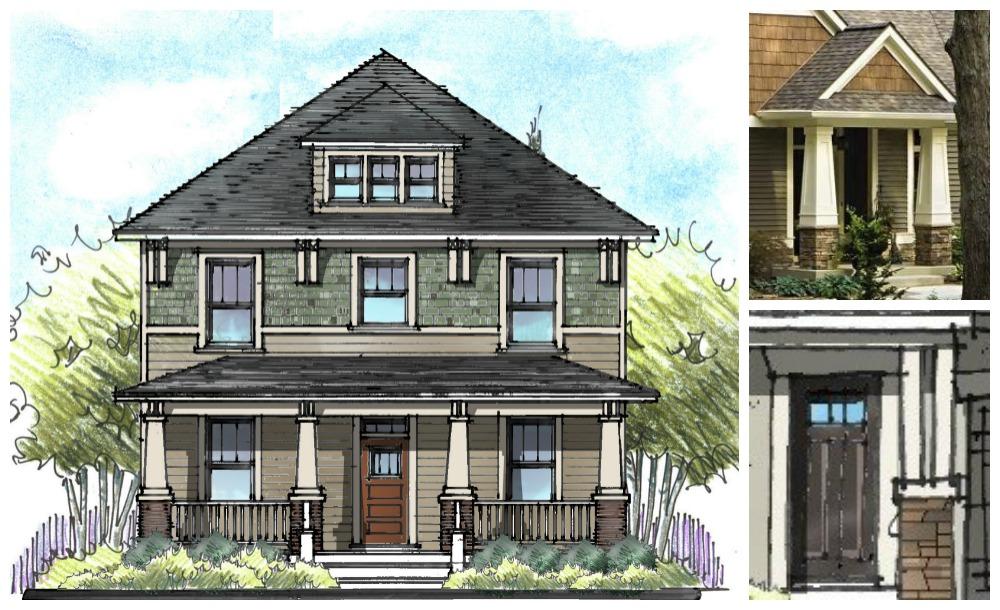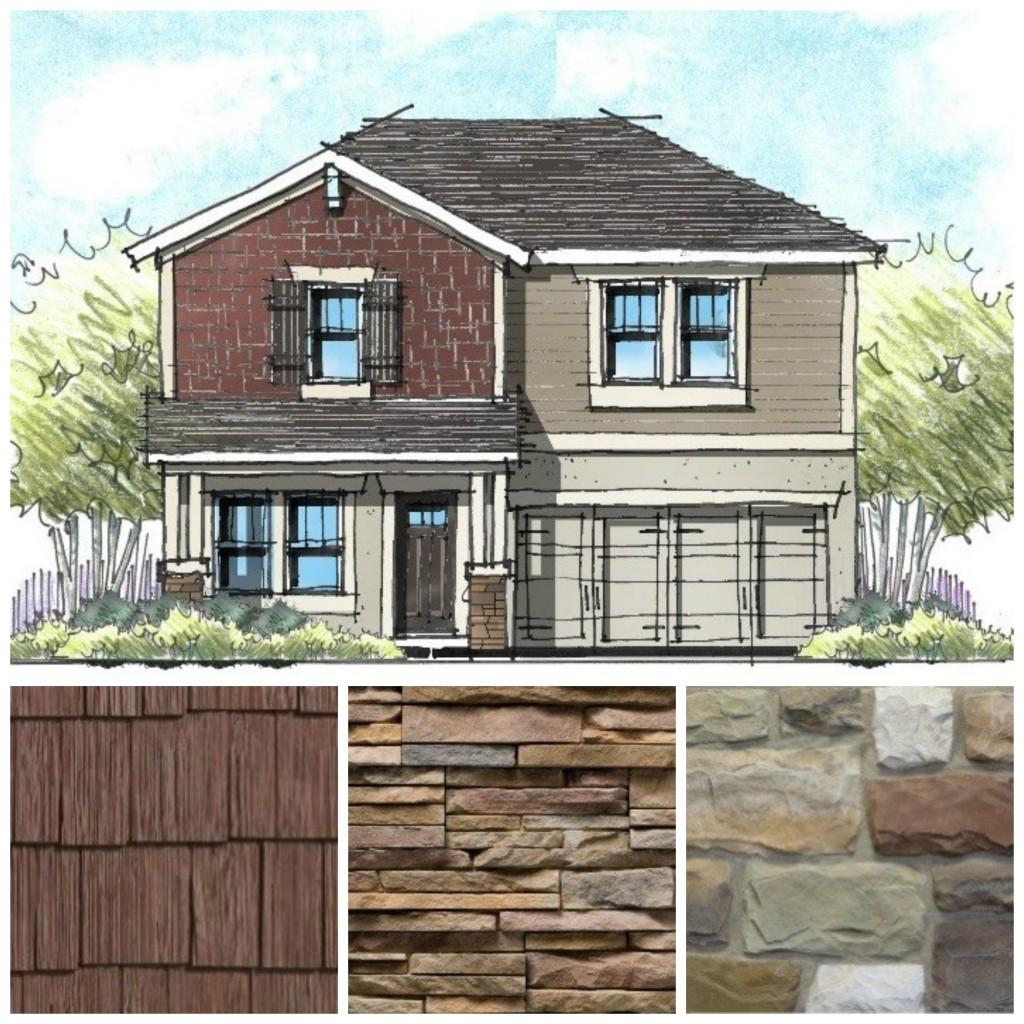Good Bones: Craftsman
As an architect, I love looking at different housing styles and analyzing what makes them unique. Every few weeks, I’ll pop in to the ProTalk blog with a post about a different style and share the details that make it distinctive.

Craftsman
When I think about architectural styles and personalities, I think of Craftsman first. The Craftsman style is confident and bold with its unique columns, broad gables, wide overhangs and expansive front porches. But there is also an artsy side to this style that creates a sense of individualism. The Craftsman style can be unique from house to house, but it is always big and bold.
Craftsman homes are distinctly an American style, with origins rooted in the English Arts and Crafts Movement. The Craftsman style spread throughout the country in small to medium size bungalows starting in 1905. The style has had a recent resurgence with buyers because it feels timeless without being traditional.
The Elements
Porches

With its charming front porches, the Craftsman style extends the home to the outdoors, creating additional living space, while contributing to a more pedestrian friendly streetscape.
Columns
The columns, whether they are narrow double columns (see left image) or heavy tapered ones (see right), sit atop masonry piers, and support the covered front porch
Windows
The window styles are a departure from traditional. The three patterns typically seen are three vertical panes over one pane; four over one; or prairie style (see image below). Adding a color (I love red here) to the window is in keeping with the boldness of the style.

Trim and Accents
The trim around door and windows is reflective of the Arts and Crafts roots of this style. Shutters aren’t often used with this style but when they are, board and batten shutters are reminiscent of the Arts and Crafts origins.
Materials

Historically, Craftsman building materials varied by region, but typically included a mix of materials: masonry on column piers, foundation and chimneys; multiple cladding profiles, including lap siding on lower levels and shakes on upper levels or gables. The wide palette of building materials available today allows homeowners to get creative. You can find an abundance of Craftsman style building components readily available including the window grille pattern, front door and tapered columns.
For masonry choices, both brick and stone are used – but never together. The stone profile I select depends on the size of the area. For larger areas, I like cut cobblestone, but if I’m just adding stone to column piers, I prefer a narrower profile like ledgestone or True Stack – but remember to make sure the stone you select is used consistently around the exterior.
Color
Saturated earth tones are typically seen on the Craftsman style. Some of my favorite combinations include Pebblestone Clay with Russet Red; Tuscan Olive with Teak; Quiet Willow with Mahogany; and Amber and English Wedgewood. Click here to see these colors.
This style remains popular due to its timeless feel, but is not considered traditional, making it a perfect style for a young, confident buyer who wants something different than their parents house and without fear of the style becoming outdated. If you’re a bold individualist, but appreciate some of the simplicity and traditionalism of older home styles, you’ll likely love the Craftsman style.
Did the Craftsman style win your heart? If not, check out some of my other Good Bones posts and see which style fits you best.
